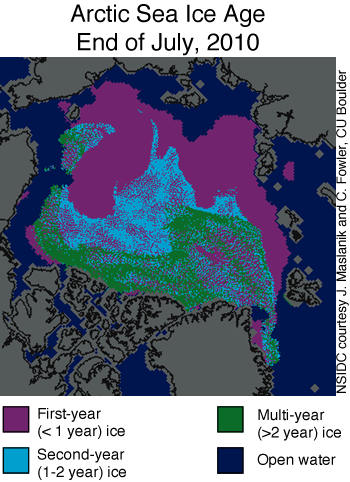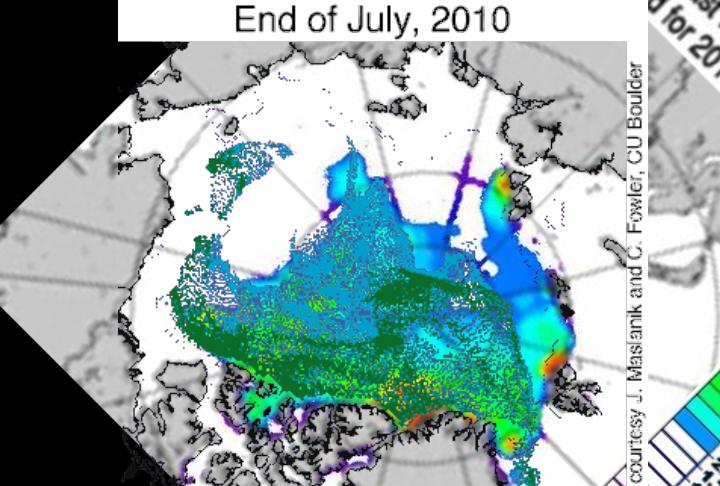NSIDC released the map above in early August, showing ice older than one year as turquoise or green. Any of that ice which survives the winter will be classified as multi-year ice next spring (MYI.)
But there was a large reduction in extent between release of that map and now. How did that affect the potential for MYI?
The map below overlays the 1+ ice (turquoise/green) on NSIDC’s most recent extent map (white.) You can see that there has been minimal effect on the older ice. Some of the ice in the Beaufort and Chuckchi Seas melted, and some blew over into the East Siberian Sea and Arctic Basin.
But the vast majority of the older ice appears to have survived the summer, which bodes well for an increase in MYI next spring – when the ice is a year older and the turquoise changes to green.
The next map compares PIPS (greater than 2 metre thick ice) vs the NSIDC ice age map. Note that there is good correlation between the current PIPS thickness maps and the July NSIDC age maps. A lot of the ice undoubtedly blew towards the east since the NSIDC map was made, which accounts for the discrepancies on the right side of the map.
Conclusions :
1. Depending on how much ice blows out of the Arctic this winter, there is the potential for a significant gain in the amount of MYI next spring.
2. PIPS provides a reasonably accurate representation of the location of thicker/older ice.





What are the bets that NSIDC introduces a new category next year – 2-3 year old ice saving MYI for ice 4 years or older in age!!!
When has NSIDC decleared Polar Ice’s birthday? March 20th? January 1st? October 31st? Have never happened across that tidbit. Steve, can you declare a date?
I think October 31st would be much better so we don’t have to hear all winter about the horrifying lack of multi-year ice. We would know they just missed the party.
Balloon Boy day is October 15 here in Fort Collins. Seems like a good day for a celebration.
Pingback: Hielo ártico: balance del verano 2010. II. Atmósfera, océano y hielo | Banquisa en el Ártico: el blog del hielo marino